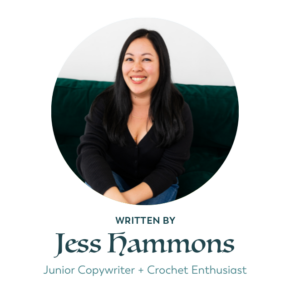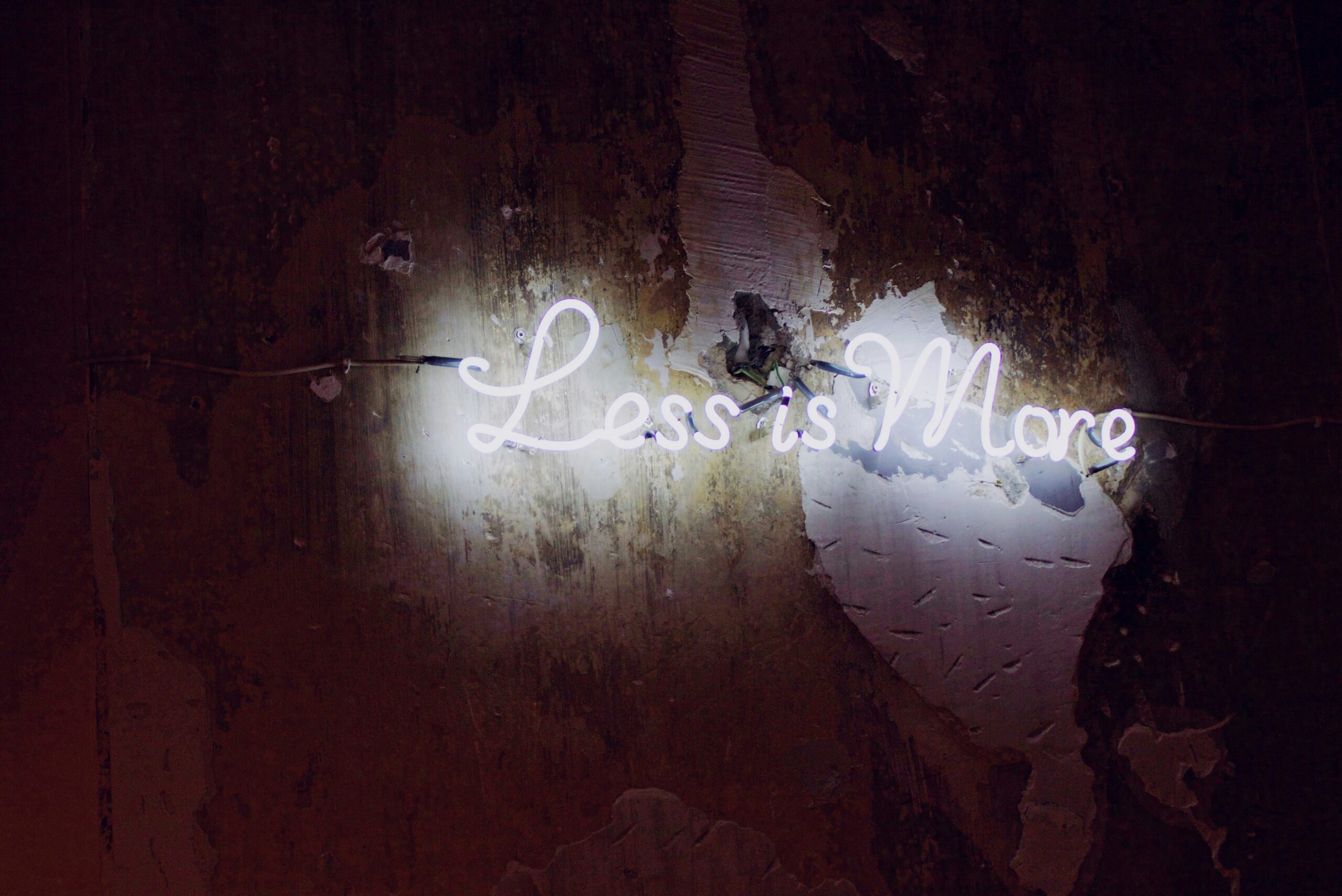How long should your blog posts be? What about sales pages? Can your email newsletters be too long? (Answer key: At least 1,000 words; as long as it needs to be to get your point across; and yes.)
Sometimes SEO and “industry experts” say that our content and copy need to be longer to benefit your biz and engage your audience. But we’re telling you now: it’s okay to cut and trim your copy. In fact, it’s necessary.
Here’s why…
Fluff takes away from your message
If this were a friendly discussion about how long content and copy should be, you might bring up the point that storytelling is important for content marketing. Sometimes, telling a memorable and compelling story can market what you’re selling better. And the reality is, sometimes that story is long.
Fair point. Storytelling is powerful. But it still needs to be direct and easy to understand. Even more so when it’s used for marketing!
When a story is too long, fluffy, or self-indulgent, you risk losing your audience in the details that don’t matter. They’ll miss the heart of the story, the takeaway, and the message you’re trying to impart on them.
Ever read a book or watch a TV show that has too much shit going on? There’s a subplot here, a character doing their thing over there, narrator exposition that comes out of nowhere. With all this going on, you forget the core storyline. Maybe you even lose interest and put down that book or bail on that TV show.
That’s what we’re talking about. The same thing can happen in your content and copy. Sometimes you’re too in the weeds to see that there’s too much going on and no main point in sight. And unfortunately, you start to lose your audience’s attention.
Wordy copy looks unprofessional
Being “professional” isn’t a top priority at Uncanny, but we take it seriously when it matters. If being professional is one of your company values and part of your brand voice, then it’s even more important to cut and edit your copy with care.
Wordy copy can look unprofessional and make your brand look vague, unfocused, or even shady. It can also make your content or copy trivial and forgettable. If you use overly formal words or jargon, it can make you look cringey and stiff.
There are so many ways your content and copy can be taken if you don’t edit it.
Let’s look at this example of a hypothetical, wordy piece of website copy:
What we do at Uncanny Unedited is make it really easy for authors to market the books they’ve written. If you’re an author and you hire us to work with you, we’ll help you get back to your keyboard (& the fictional characters you want to spend more time writing).
Let’s ditch the unnecessary words, change some phrasing to use the active voice, and crop the sentences. Here’s the final version from the website of our sister brand, Uncanny Unedited:
Uncanny Unedited makes author marketing easier, so you can get back to your keyboard (& the characters you love).
See how clear and concise it is in comparison? You instantly know who we target (authors) what we offer (author marketing) and why (so authors can focus on writing).
Concise copy is easier to follow and understand
When your copy is straightforward and concise, you have a better chance of keeping your audience’s attention. You don’t need to be fancy or try to impress your audience with big words.
Sometimes less IS more, so don’t be afraid to prune your copy.
Once you have a main idea and your creative juices start flowing (ew, sorry), write without reservation. Then, walk away and come back. Read your copy with fresh eyes.
Did you stay on topic? Did everything you write support your main idea? Cut anything that doesn’t. That’s what first drafts are for: to get your thoughts down and give them some structure before you take out the filler.
Here are some tips on what to prune to make your writing stronger:
- Cut the extra details. Remove anything that doesn’t support or relate to your main idea.
- Cut filler words (within reason). These are indefinite words like “really,” “kinda,” or “very.” I say “within reason” because these words can sometimes strengthen your brand voice, help tell a joke, or support a point you’re trying to make. Prune with care.
- Cut overlong sentences. One sentence = one idea. If a sentence has more than one idea, split it into two sentences. If you read your sentence out loud and run out of breath, trim it.
- Cut the jargon. We hate jargon with a passion at Uncanny. It’s unnecessary. It’s annoying. No one likes it. Leave it out, please. You can write better than that.
- Cut anything the reader doesn’t want, or need, to know. If you’re the only one who cares, take it out. You’re writing for your audience, not yourself.
What you’re left with will be powerful, effective copy and content. Gorgeous.
Good copy is shorter than you think
Writing is hard, but cutting down your content and copy can be even harder. However, the more you practice trimming your copy, the easier it gets. You’ll get into the habit of writing clearly and concisely, so eventually, you won’t need to cut as much fluff.
And with clear, concise content and copy, you’ll communicate with your audience better, get them to take action, and look more professional in their eyes.
Still nervous about cutting your copy? We know — the thought of doing it over and over is a little intimidating. You want to make sure you’re doing it right, and that your copy will stay interesting enough to grab your audience’s attention.
We respect that type of care and attention you want to put into your work.
But if you’re not keen on DIYing, we’ve got you. Learn more about how we can work together on retainer here so you never have to worry about it again. Whew!

